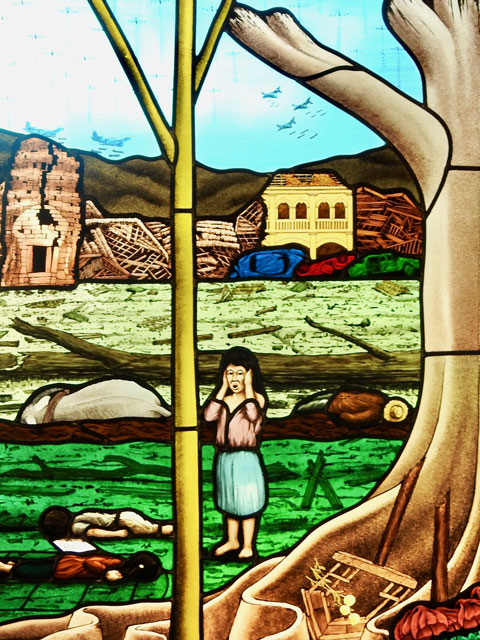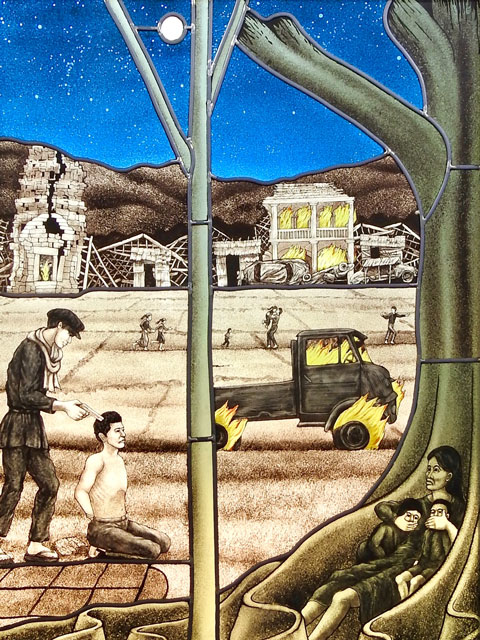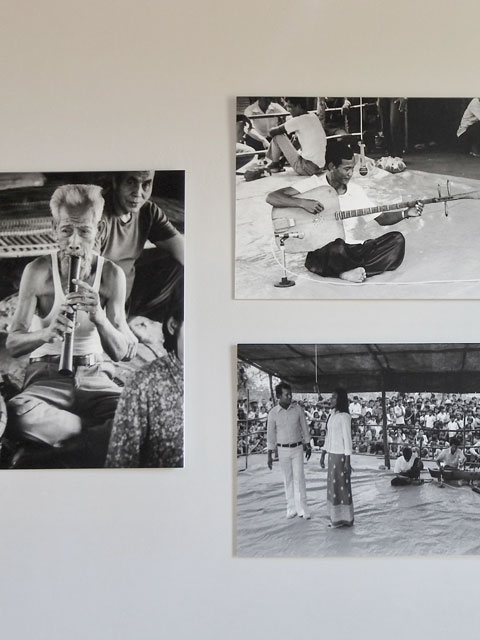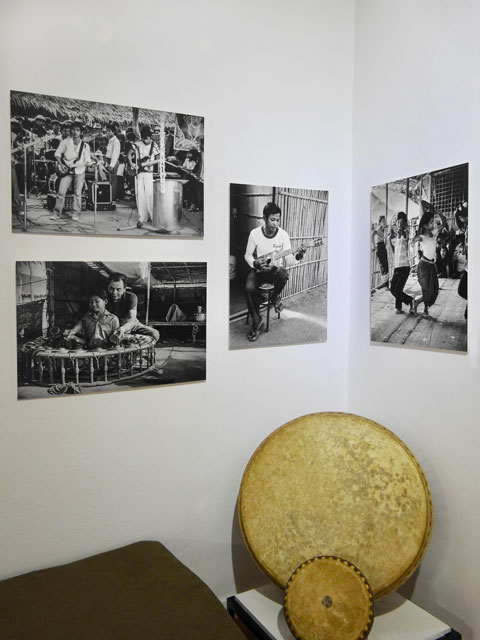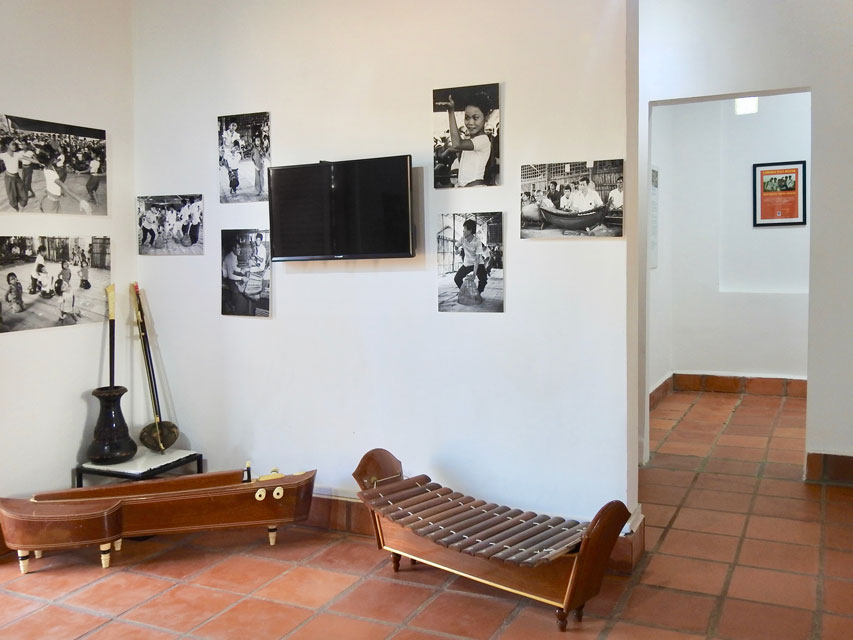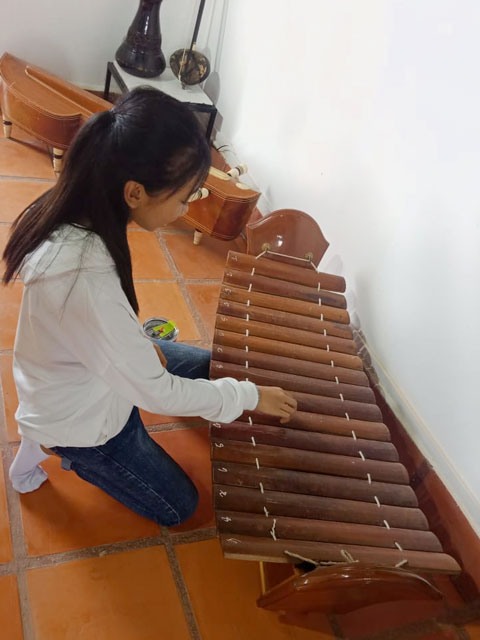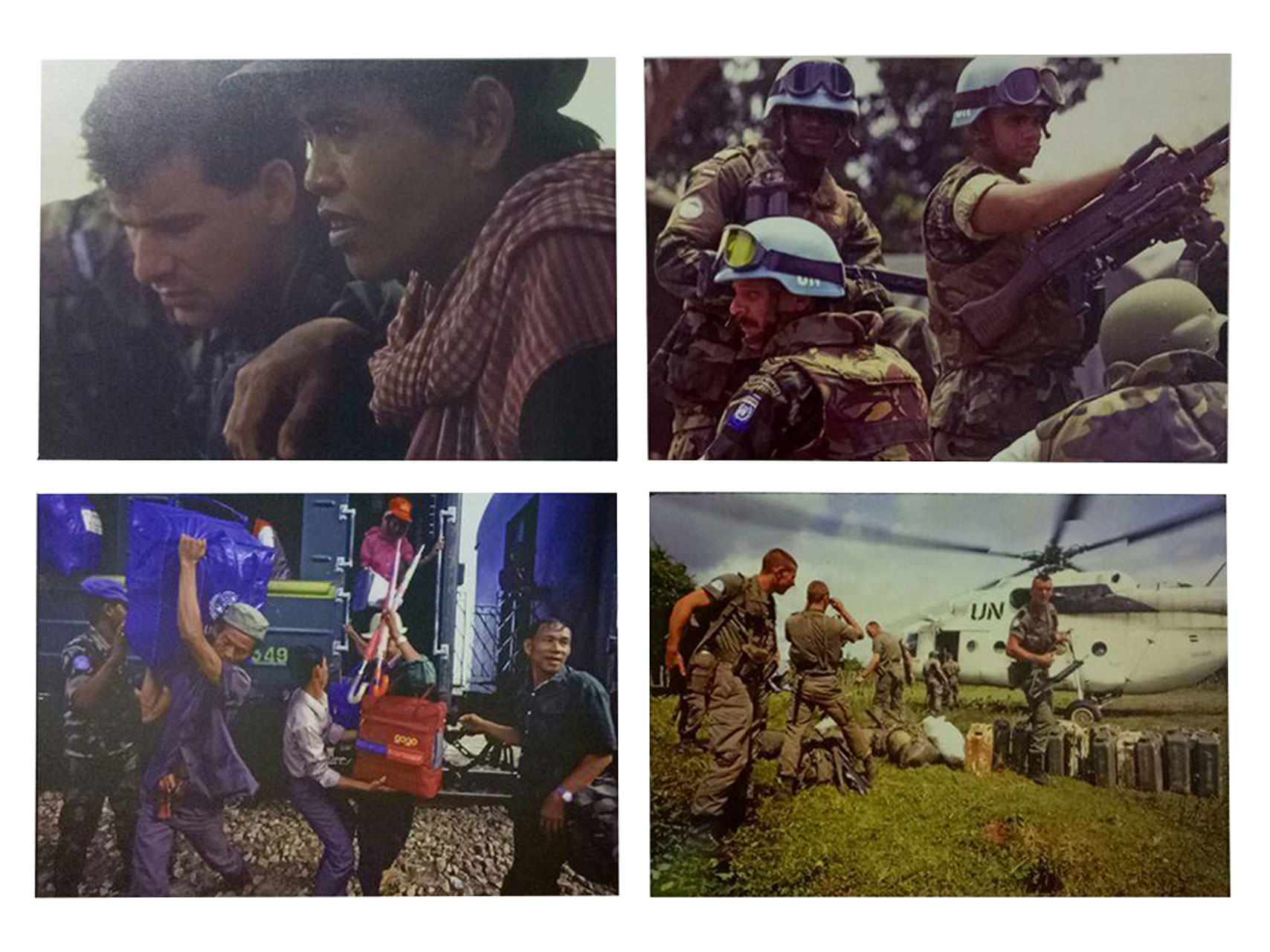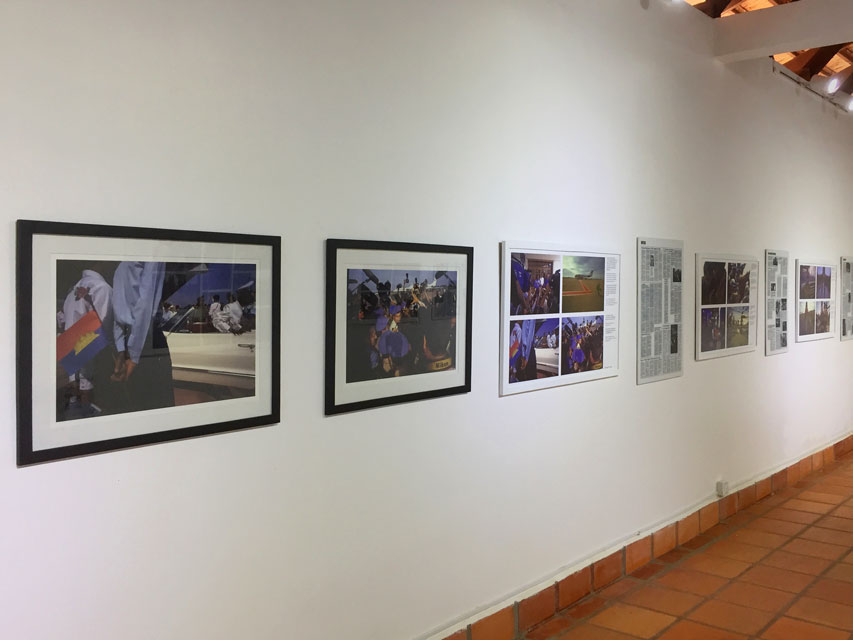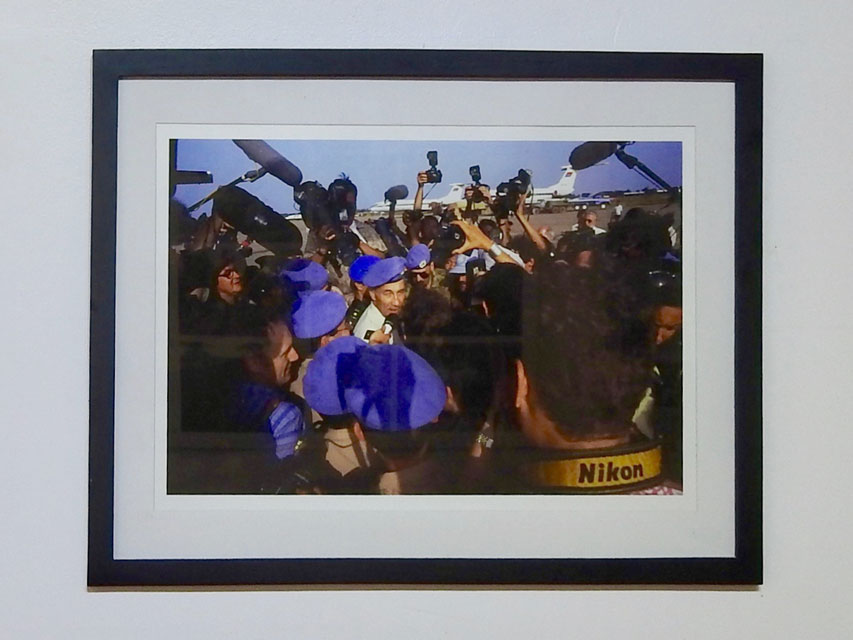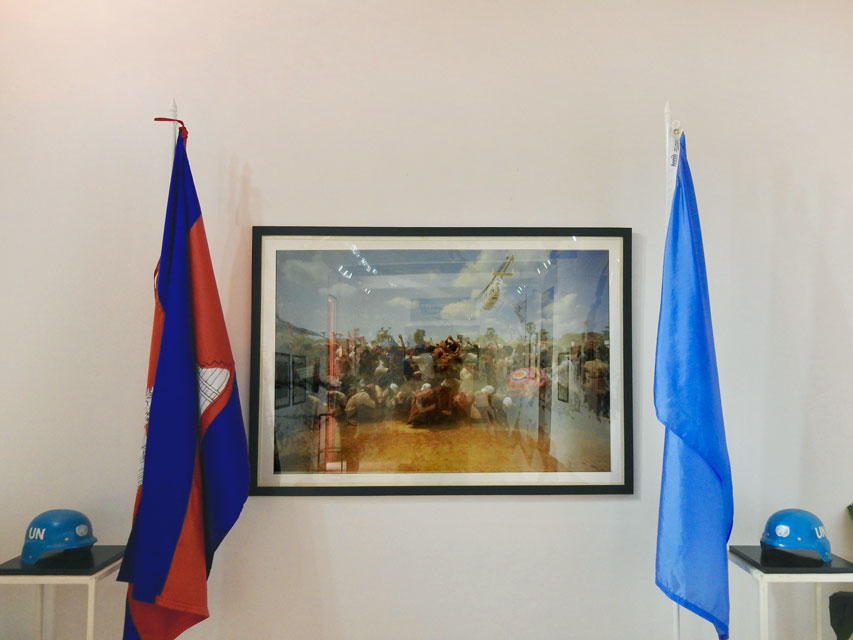Journey from War towards Peace & Positive Future
Cambodia’s story is often dominated by the 3 years and 8 months when the Khmer Rouge controlled the country. The horrors of this time, in the midst of 3 decades of war, often overshadows the incredible resiliency of Cambodians in overcoming such violence and working to bring peace to their country.
This exhibition hall presents Cambodia’s decades of conflicts since 1960s, and how it has come a long way to the end of conflict.
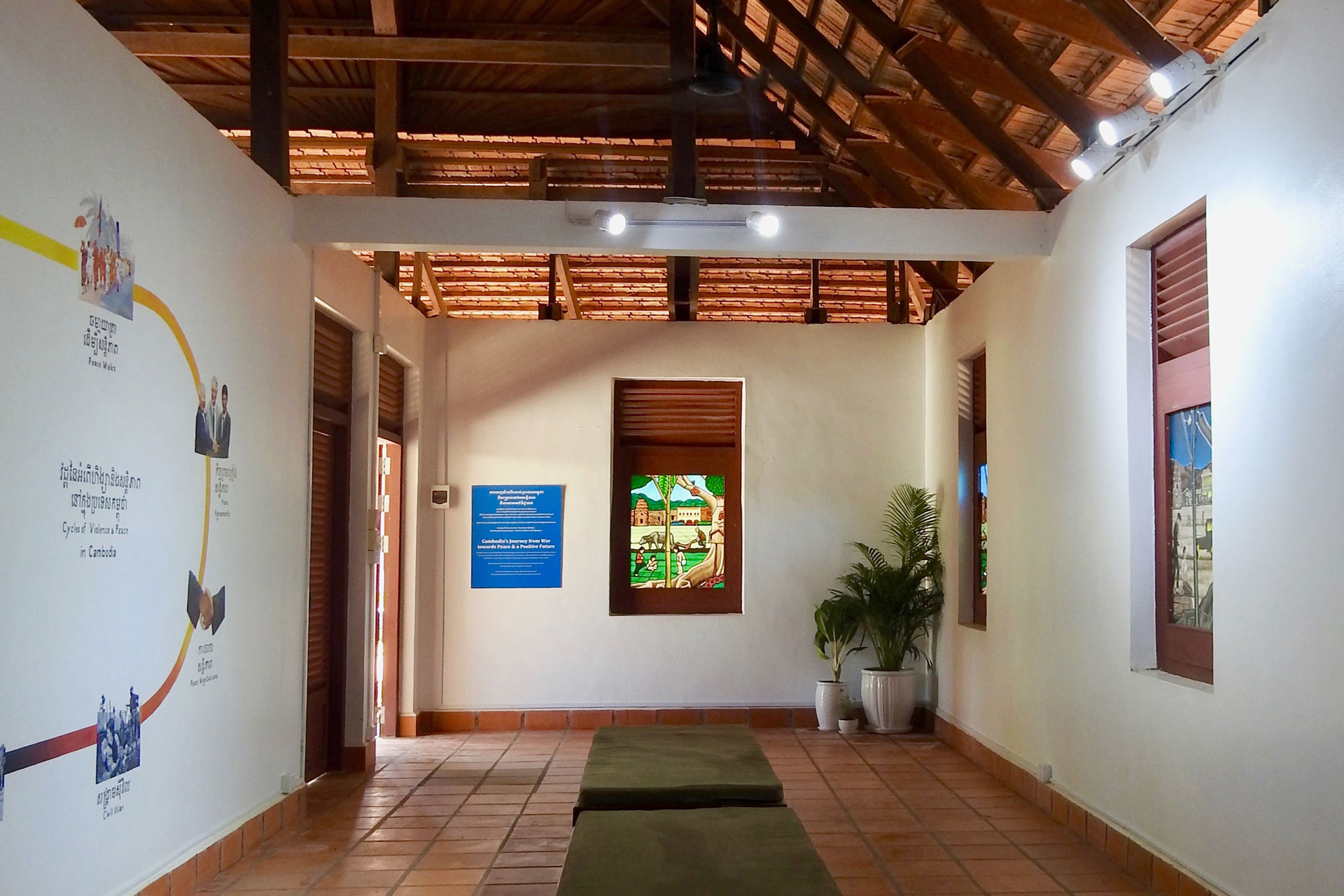
These windows reflect the country’s turbulent history, but more importantly remind us that Cambodia’s future is brighter than the past.
As you move through these images, what stories do you see? What possibilities does the future hold? How can we continue this journey?
How Cambodians have gone a long way towards national reconcilitation after cycles of violence and peace.
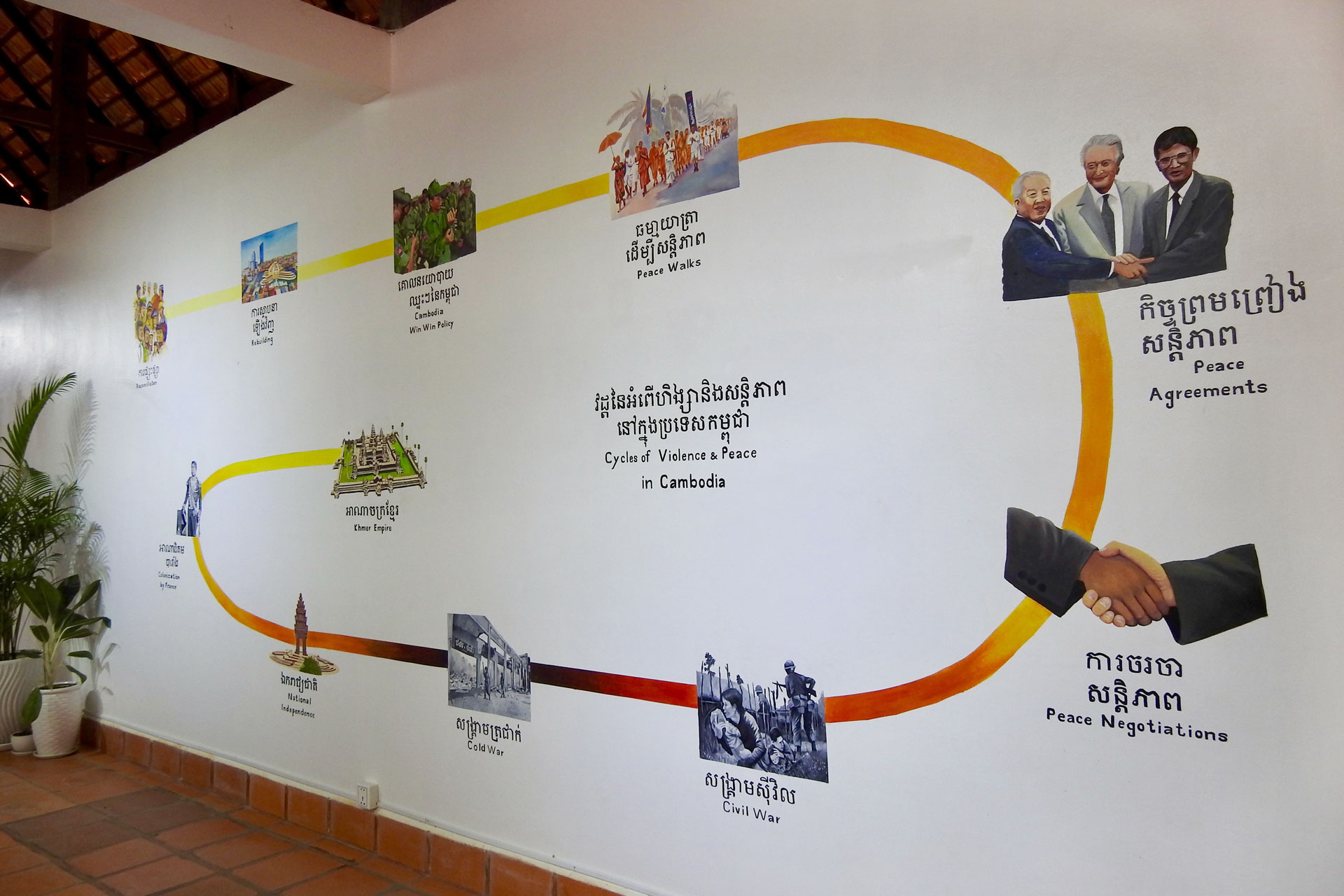

On October 23, 1991, the State of Cambodia, FUNCIPEC, the Khmer People’s Nation Liberation Front and the Khmer Rouge along with 18 countries signed the Paris Peace Accords. The Accords marked the end of decades of war and were made possible because those different groups shared a vision for peace in Cambodia and a desire to try a new way to bring peace to the country.
What is the Paris Peace Accord about?
1. Agreement concerning the sovereignty, independence, territorial integrity & inviolability, neutrality & national unity of Cambodia
“A comprehensive political settlement for Cambodia is essential for the long-term objective of maintaining peace & security in Southeast Asia.”
2. Declaration on the rehabilitation & reconstruction of Cambodia
“The primary objective of the reconstruction of Cambodia should be the advancement of the Cambodian nation & people, without discrimination or prejudice, with full respect for human rights & fundamental freedom for all.”
3. Agreement on a comprehensive political settlement of the Cambodia conflict
“The task of rebuilding the Cambodian nation will require the harnessing of all its human & natural resources. To this end, the return to the place of their choice of Cambodians from their temporary refuge & elsewhere outside their country of origin will make a major contribution.”
4. Opening lines of the Agreement on a comprehensive political settlement of the Cambodia conflict.
Concerned by the tragic conflict & continuing bloodshed in Cambodia, the Paris Conference on Cambodia was convened, at the invitation of the Government of the French Republic, in order to achieve an internationally guaranteed comprehensive settlement which would restore peace to that country.”
The Paris Peace Accords made possible the return of over 300,000 refugees to Cambodia as well as for different historic in exile to come back. This provided the necessary stability for the rebuilding of the country to start, and set the course for democracy paving the way for the 1993 elections.
A transitional authority, called the United Nations Transitional Authority in Cambodia (UNTAC), was established and tasked with overseeing the implementation of the Peace Agreement. UNTAC played a crucial role in the country’s peaceful transition and ensuring human rights.

Photo by Tom Fawthrop
In response to the Khmer Rouge’s boycott of 1993 elections and continued guerrilla war in western Cambodia, the government led by Prime Minister Hun Sen developed the “Win Win” policy, which ended the three-decades long war and provided a pathway to peace.
Key Principles
1. More powerful party reaching out to the weaker party to negotiate.
2. Courage to trust the enemy
3. Recognizing rights and needs
4. Guaranteeing dignity
5. Patience and compassion strengthens healing
An observer’s perspective
“After the society was completely destroyed by violence and war, what has been left is compassion. The Cambodian Win-Win Policy showed that when the more powerful begin to show compassion to the weaker party, peace is possible.”
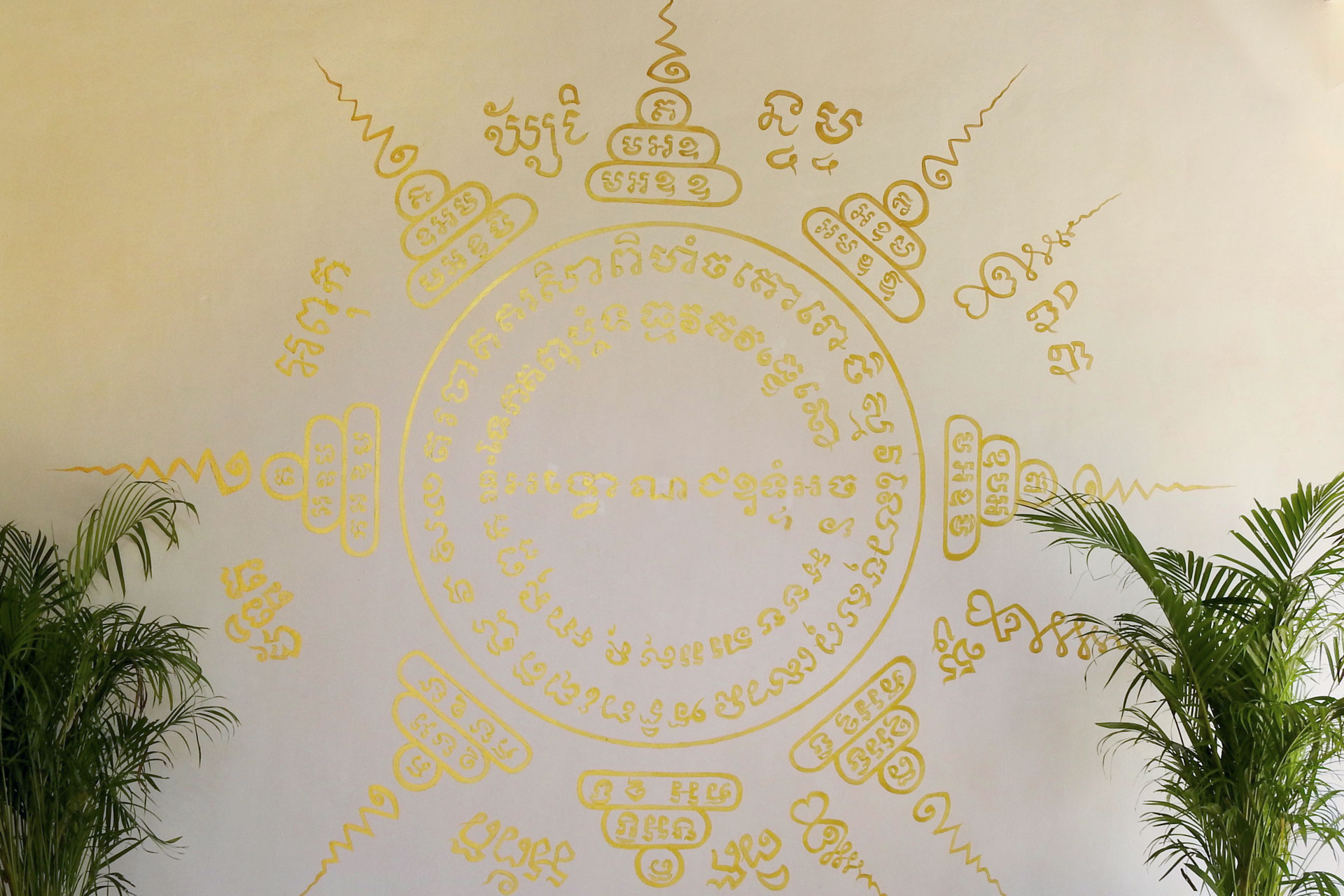
Protection Mural

